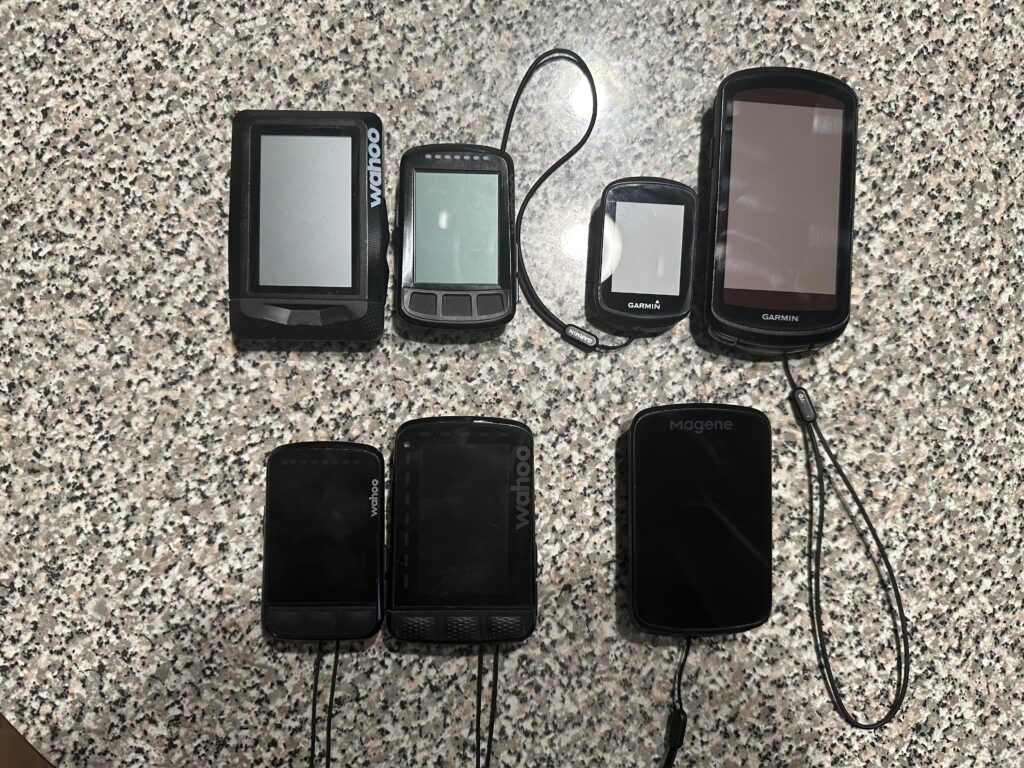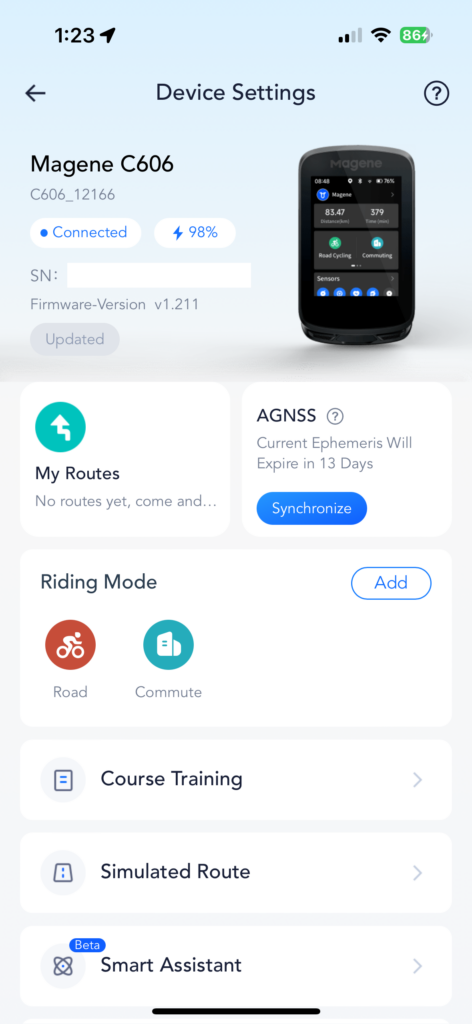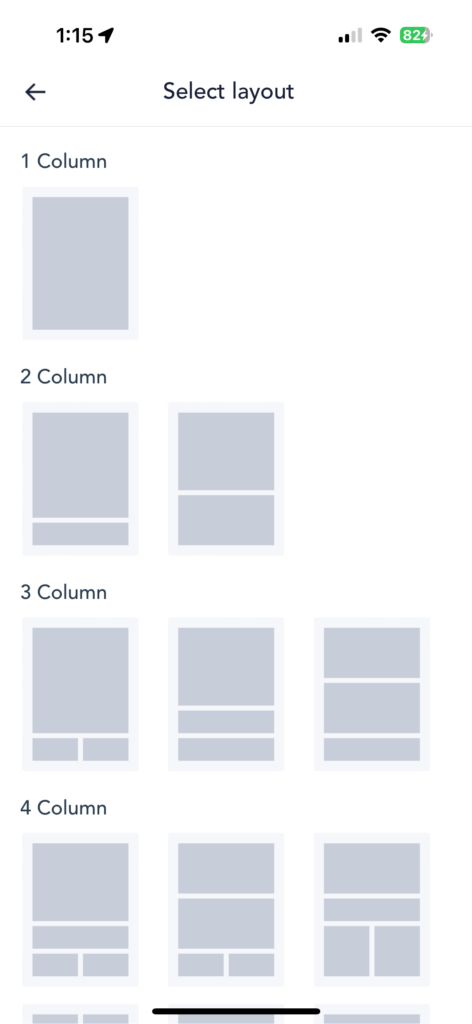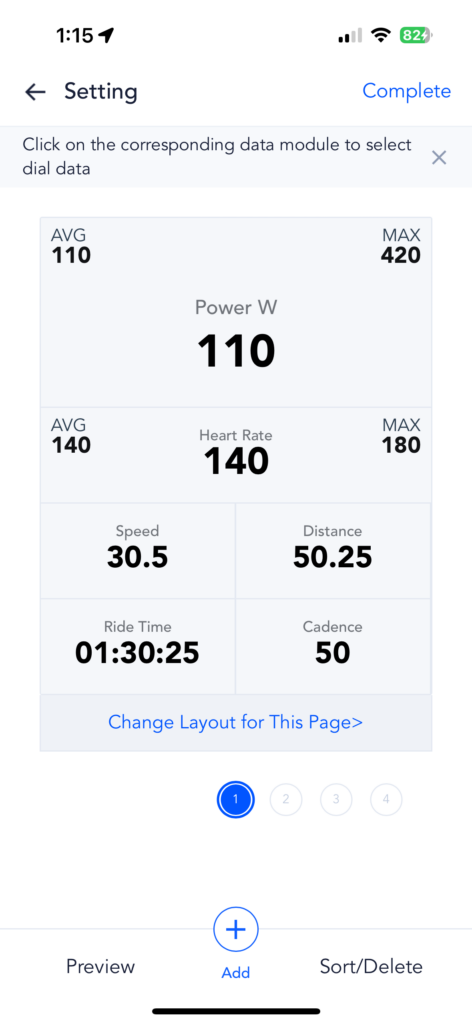I’ve been getting Instagram ads almost non-stop for the new Magene C606 head unit and decided to snag one to compare against my existing fleet of head units. For $160, I figured it was worth a playing around. I haven’t seen an in-depth look at this head unit from DCRainmaker or GPLama, but was curious to see what a budget bike computer looks like these days. I probably won’t go into every single feature on this head unit, sticking to what I’ll actually use.

Overview
The unit itself is fairly ROAM-sized, with a traditional LCD backlit display. I was initially worried that the battery life would take a hit from a screen like this, but I think it holds its own pretty well. I had 4 decent distance rides on the unit and only saw the battery hit 51%.
From a connectivity standpoint, it’s pretty standard in the market. I’ve got HR, Power, ETap AXS, Varia and ANT+ lighting connected (the Varia paired and created the ANT+ light network on it’s own). I haven’t actually tried using an ANT+ headlight with it yet. The data collected from these sensors all seem to be pretty solid. GPS data is generally okay, but definitely not as accurate as some of the devices doing dual-frequency GNSS like the 1040 Solar or ROAM2. The C606 uses AGNSS similar to the Wahoo ELEMNT Rival, meaning a file is synced to the device periodically to help it find satellites quickly. With the C606, you need to do this at least once every two weeks.
The companion app used OneLapFit is about what you’d expect from a Chinese language company without much of an English market presence. There’s some translation oddness around the app, but for the most part it works pretty well.
The app allows you to configure a lot of different field layouts, a la Garmin. However, anytime you change a field layout it just blows away all the fields you had set. I really like the way Wahoo handles the zoom/field configuration, but there’s definitely some power in the way Magene allows you to configure fields. They provide a lot of different layout options with up to 10 fields on a page.
I did however find that they’re some fields I’d expect to see – even some data that’s still recorded to the FIT file, but not viewable during your ride. Temperature was a notable miss for me.




The best part about the page configurations for this device was… profiles. Very similar to Garmin’s approach, you have colorized themes for each profile, with the ability to customize pages/fields for each profile independently.

What worked well
Magene supports two services for syncing your rides – Strava and TrainingPeaks. The device happily sent rides to both services in my use, sending the data I’d expect to be there and just generally working well without issue.
The screen was reasonably visible in the sun outside, though not as readable as what I consider to the best contrast outdoors – the ELEMNT ROAM2. That being said, it was just fine for most of my riding time outside. The touch screen, while not instantly responsive, worked well enough to fit my needs. There’s also a button on the bottom left corner of the device for changing pages, making the device seem like a Garmin and Wahoo love child.
Varia Radar support paired to my Garmin Varia RTL515 was rock solid. It was detecting and alerting me of cars without issue. Magene even has a data field that tells you how far away the closest car is. However, they neglected to add units to the display so you’re left guessing if it’s feet, yards, meters, or parsecs. Based on my experience and configuration of imperial measurements, I’m guessing it’s feet. Not a super useful field for me, but one that was a standout compared to Wahoo’s and Garmin’s offerings.
Heart rate and power data from my Wahoo TICKR2 and Quarq DZero was solid and reliable. The gearing displayed on the unit from my SRAM ETap AXS was also great.
What didn’t work very well
Let me start by saying that for $160, this unit fulfilled expectations for the ability to record and sync rides to Strava and TrainingPeaks. Decathalon is also an option, but I don’t use it so I can’t speak to that. There are no other services it supports currently.
Strava sync is limited to ride uploads. Strava routes do not sync to the device as they do with Wahoo and Garmin. This is a big miss because syncing routes to the device is painful, requiring you to upload a GPX file using the app – and a lot of times failing to parse them. Adding Strava route sync support would be a huge win for this device. You can also manually create routes in the OneLapFit app, but it’s a painful experience compared to the route builders from Strava or others.

TrainingPeaks integration is bi-directional. You can pull workouts from your TrainingPeaks calendar and send them to the device, but the process is more manual than Wahoo and Garmin, who sync them automatically and present them as an option. A major miss was for the C606 to treat all TrainingPeaks workouts as indoor. GPS data is not recorded during these workouts, so if you’re planning on doing outdoor workouts, you’re not going to have a good time. You also cannot start a structured workout in the middle of a ride you’re recording, so you’ll have to stop and start another. This isn’t a very intuitive experience. This meant recording three separate rides for an outdoor workout I did – riding to the climb, doing the workout, and riding back home. There’s no concept of outdoor workouts, so you’re stuck to the trainer. Oddly the device recorded no GPS data, but still recorded speed.
Who does this computer make sense for?
As a previously competitive cyclist and racer, I realize I may not be the target market for many cycling products on the market. I train with a coach via TrainingPeaks, sync my rides to Strava, and import routes from Strava and other services.
The limitation of training workouts only being meant for the indoor trainer is a deal breaker for me. I’d rather not be tied to my indoor trainer when the weather is great outside, as it has been in Utah for a few weeks.
If you’re a beginner cyclist, wanting to save some money on a pretty well-featured bike computer and don’t need Strava routes synced to your head unit or want to do your training outdoor, this might work great for you. Honestly, for $160 it probably works great for a lot of people.
If Magene continues to improve the software and integrations with the C606, this could really start to challenge the bigger players in the cycling computer game. Until then, it’ll probably go back to being a backup device or something to play with when I’m bored.

